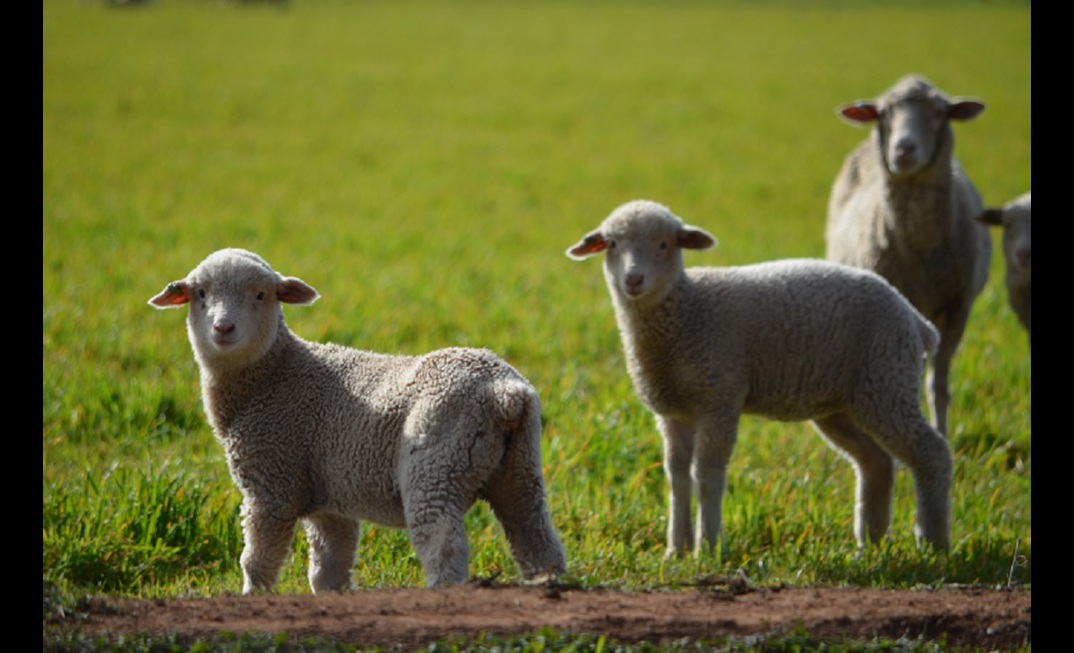Rural Bank's latest commodity overview reports the sharp decline in lamb prices came to an end in September and prices had been edging upwards over the past few weeks.
The bank said while demand slowed as higher retail prices and the cost of living pressures pushed consumers towards cheaper proteins, recent softening of retail prices has seen consumers starting to opt for lamb.
Meanwhile, beef export opportunities are providing some support for Australian cattle prices, with the bank reporting strong supply levels, which are expected to be available throughout the next month, will contribute to a lift in export volumes.
STRONG LAMB DEMAND
Rural Bank said recent rainfall in the south-east of Australia has given sheep restockers some confidence, however the dry seasonal outlook continues to be a limiting factor.
It reported the National Trade Lamb Indicator softened 15 cents (3.2 per cent) over the past month and is lagging 369 cents (44.2 per cent) behind this time last year.
The bank said lamb slaughter averaged almost 442,000 head per week over October, up 40,000 head (10 per cent) from October last year.
And added year-to-date lamb slaughter also continues to trend well above 2022 levels, up over 34,000 head per week (9.3 per cent).
Rural Bank said this surge in supply and the dry conditions have applied significant downward pressure to the market this year.
"It seems we may have reached the bottom of the price cycle," it said.
"Although prices are not expected to increase significantly before the end of the year."
Rural Bank said lamb exports also continued a strong run throughout October, with 30,605 tonnes exported for the month.
"October's lamb exports have pushed year-to-date exports up 12.2 per cent from last year and 18.1 per cent above the five-year average," it said.
"China remains our largest trading partner by volume so far this year, with exports 13.4 per cent above the five-year average."
STEADY MUTTON PRICES
Rural Bank reports mutton prices have been relatively steady over the past month after a brief price spike following rains at the start of October.
It said the National Mutton Indicator is down 345 cents (75.8 per cent) since the start of the year and plunged to its lowest point since 2013 in late September.
"Prices have struggled with the surplus of supply, with weekly mutton slaughter up almost 49,000 head per week (48.7 per cent) year-to-date," it said.
"The high slaughter rates have seen export volumes surge in 2023.
"Year-to-date mutton exports are up over 54,000 tonnes (47.6 per cent) and are 45,000 tonnes (36.5 per cent) above the five-year average.
"Sheep yardings usually increase throughout November but given the high yardings earlier in the year this may not be the case.
"The dry seasonal outlook will limit any significant uplift in prices over the next few weeks."
YOUNG CATTLE PRICES LIFT IN THE EAST BUT DROP IN THE WEST
Rural Bank reported the Eastern Young Cattle Indicator (EYCI) lifted 20 cents to 383 cents a kilogram in early November- its highest point since late September.
It said at this level the EYCI is 5.5 per cent higher month-on-month, but still down 62.5 per cent from a year ago.
Recent rainfall throughout cattle regions in northern states has boosted domestic cattle prices, according to the bank, which said stability in slaughter rates has also provided support for prices.
"Conversely, the Western Young Cattle Indicator (WYCI) declined 21.2 per cent month-on-month to 387c/kg in the first week of November," Rural Bank said.
"This is due to the supply of new season weaners in the west."
BEEF EXPORTS LIFT
Rural Bank said national average weekly slaughter rates increased throughout October and this lift led to Australian beef exports recording moderate growth during the month.
"Average weekly slaughter rates were reported at just over 126,000 head over the last month," it said.
"The last week of October saw slaughter rates four per cent higher month-on-month and 38.1 per cent higher year-on-year.
"Year to date slaughter rates are 24.1 per cent higher than in 2022."
A dry outlook across key cattle production regions throughout October has likely prompted a lift in turnoff of cattle, with most processing centres reported as fully booked until the beginning of 2024.
"Some abattoirs in Queensland are adding extra shifts on weekends to manage the significant supply levels," Rural Bank said.
"Without much processing capacity available, slaughter rates are only likely to lift marginally in November."
Meanwhile, total beef exports increased 6.5 per cent month-on-month to just over 105,000 tonnes.
"This was 44.1 per cent higher than a year ago and was the largest volume since December 2019," Rural Bank said.
"Strong supply levels are expected to be available on local cattle markets throughout the next month.
"This is likely to contribute to a lift in export volumes to key markets."
Beef exports for the year-to-date are 24.4 per cent greater than 2022, according to Rural Bank, with the strongest growth coming from the United States, which remains Australia's largest export market so far in 2023.























